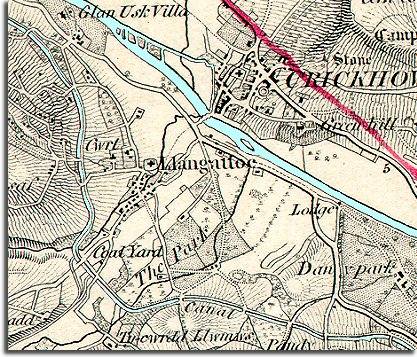The map of Llangattock below shows the village of Llangattock and the surrounding area in the middle of Queen Victoria's reign. Situated at a crossing point on the river Usk, the village was always close enough for people to work in the town of Crickhowell and visit the market.
